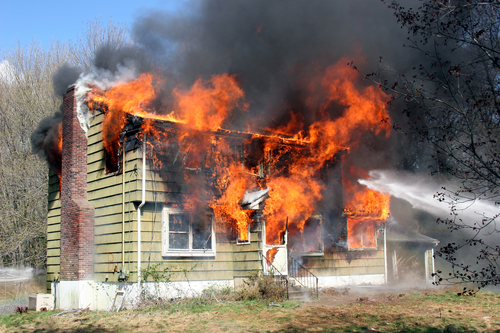[The following is a guest post by Richard S. Levick, Esq, president and chief executive officer of Levick Strategic Communications. You can Follow Richard on Twitter @RichardLevick where he comments daily on risk management and crisis management.]

Immense as it may be, the March 30 Global Payments data breach that dominated headlines is only the latest in a series of events that made this current crisis eminently predictable. If there are any illusions that this breach was anomalous, consider the extent to which high-profile data breaches similarly dominated headlines in 2011.
Sony suffered over a dozen data breaches stemming from attacks that compromised its PlayStation Network, losing millions and facing customer class action lawsuits as a result. Cloud-based email service provider Epsilon suffered a spear-phishing attack, reportedly affecting 60 million customer emails. RSA, whose very business related to on-line security, experienced an embarrassing and damaging theft of information related to its SecureID system, necessitating an expenditure of more than $60 million on remediation, including rebuilding its tattered reputation.
And the list goes on.
Right now, just about all businesses face cyber risks. The worst include intellectual property losses due to economic espionage — by far the greatest risk to companies — as well as data breaches and ideological “hacktivists.” And the growth rate of those risks often exceeds a company’s ability to fight them.
Over the last decade, companies have experienced exponential increases in the volume and type of their digital assets along with an explosion in the types of storage devices that house them. With enterprise resource planning software, email, cloud computing, laptops, iPads, smart phones, and other portable devises, companies may have data storage systems that number in the hundreds. Managing and securing critical information has become a commensurately more daunting task.
As the situation grows worse, many boards and senior management now take a head-in-the-sand approach to cyber-threat management. A recent survey from Carnegie Mellon University’s CyLab analyzed the cyber governance policies of the Forbes Global 2000. Its findings are troubling. “Boards and senior management are still not exercising appropriate governance over the privacy and security of their digital assets,” states the report. Less than one-third undertake even the most basic cyber-governance responsibilities.
These findings are supported by an in-depth look at cyber-crime published by PricewaterhouseCoopers late last year. According to the survey, which polled nearly 4000 executives from 78 countries, while cybercrime ranks as one of the top four economic crimes (falling just after asset misappropriation, accounting fraud, and bribery/corruption), 40% of respondents reported that they had not received any cyber-security training. A quarter said that their CEOs and boards do not conduct regular, formal reviews of cyber-crime threats, and a majority reported either that their company does not have – or they do not know whether their company has – a cyber crisis-response plan.
Welcome to the risk management officer’s worst nightmare.
According to the Ponemon Institute’s most recent statistics, the average cost of a data breach is $7.2 million with the average cost per compromised record coming in at $214. But the damage done by a cyber-breach goes well beyond the initial information loss. Real costs from business interruption, intellectual property theft, lost customers and diminished shareholder value due to reputation damage all can — and do — inflate those figures. In fact, for 40% of respondents in the PwC study, it is the reputational damage from cybercrime that is their biggest fear.
As cyber-risks continue to grow, companies must therefore focus on reputation as well as strengthening the mechanisms with which data is secured. A few things are imperative.
Boards and senior management must take responsibility for crisis response. Their objective must be to crystalize the company’s crisis instincts – to make crisis response part of the institutional DNA.
Crisis plans are actually counter-productive if they are created simply to be put on a shelf and read only when they are needed. Particularly in the context of cyber-crime, a realm in which new risks seem to emerge almost daily, the need to revisit and revise the plans is exigent. Regular rehearsals, refinements, discussions and additions transform the culture into one rooted in not the possibility but, rather, the expectation of crisis.
Education of employees is imperative. Employees often assume that securing company information is solely the responsibility of company IT specialists – an assumption fraught with risk. Every employee in an organization has the responsibility and the means to protect company data.
In addition to education, the key for companies is to keep less information in the first place, according to Paul Rosenzweig, Esq., founder of Red Branch Law & Consulting, PLLC. Backing up data on the other end is also vital. And while there are attendant costs involved, they are well worth it, he says. “In a world in which the bottom line is everything and the benefit of your expenditure may be recaptured only over years, if ever, this is hard,” said Rosenzweig. “It may well seem like all cost and no benefit in the beginning – that is, until the day it is all benefit and no cost.”
Companies must also designate a response team and ensure that all participants understand their roles. During a crisis, the response team must make critical decisions with too little notice and too little information. Regular meetings ensure that team members understand their individual responsibilities and develop trust in one another. Periodic crisis team exercises allow companies to capture what goes right and what goes wrong in each simulation. The lessons learned are critical when a real crisis is at hand.
When a data breach does occur, companies must make full disclosure as quickly as possible and let stakeholders know how they plan to remediate the situation so that it will not recur. Focusing on corrective future initiatives can restore trust.
With the advent of new technologies, the risks for companies are now greater than ever. Companies’ ability to recognize this moment and transform the way they think about their information is key to long-term sustainability and brand value.




